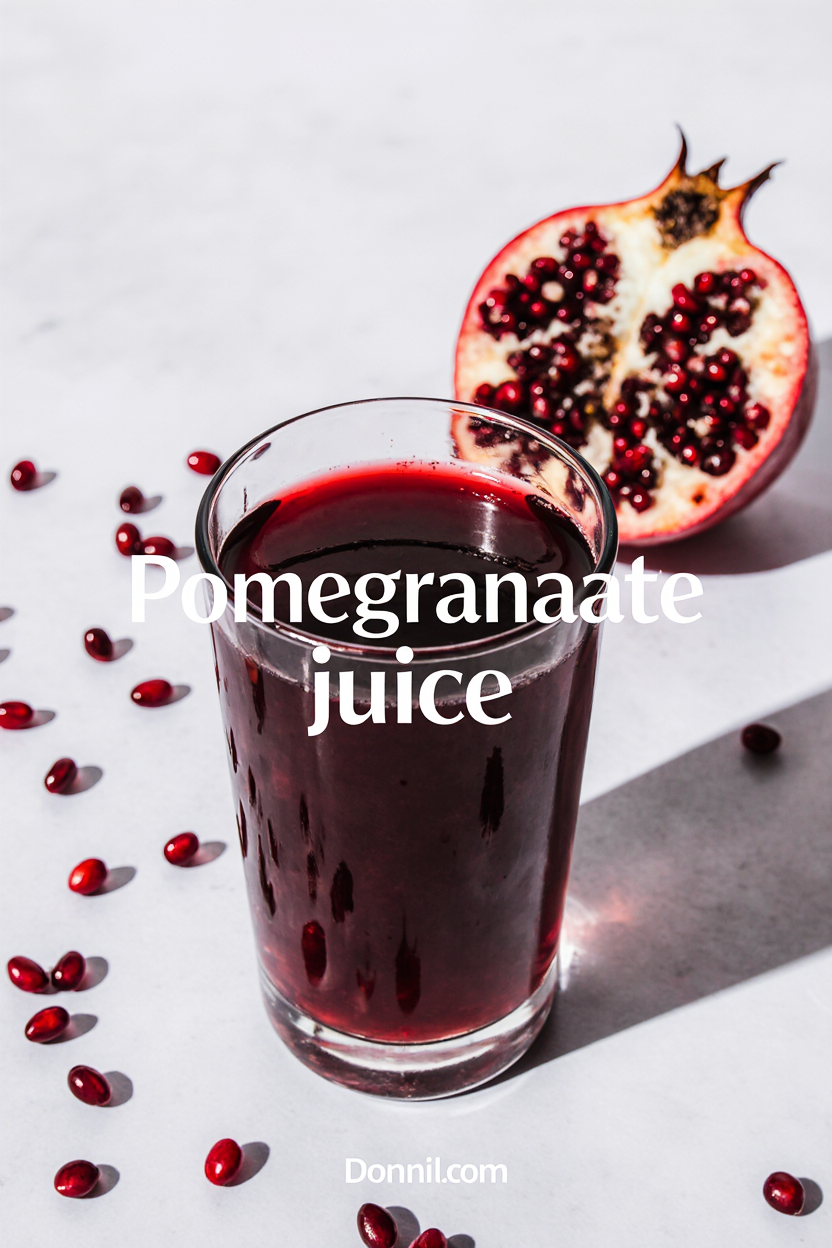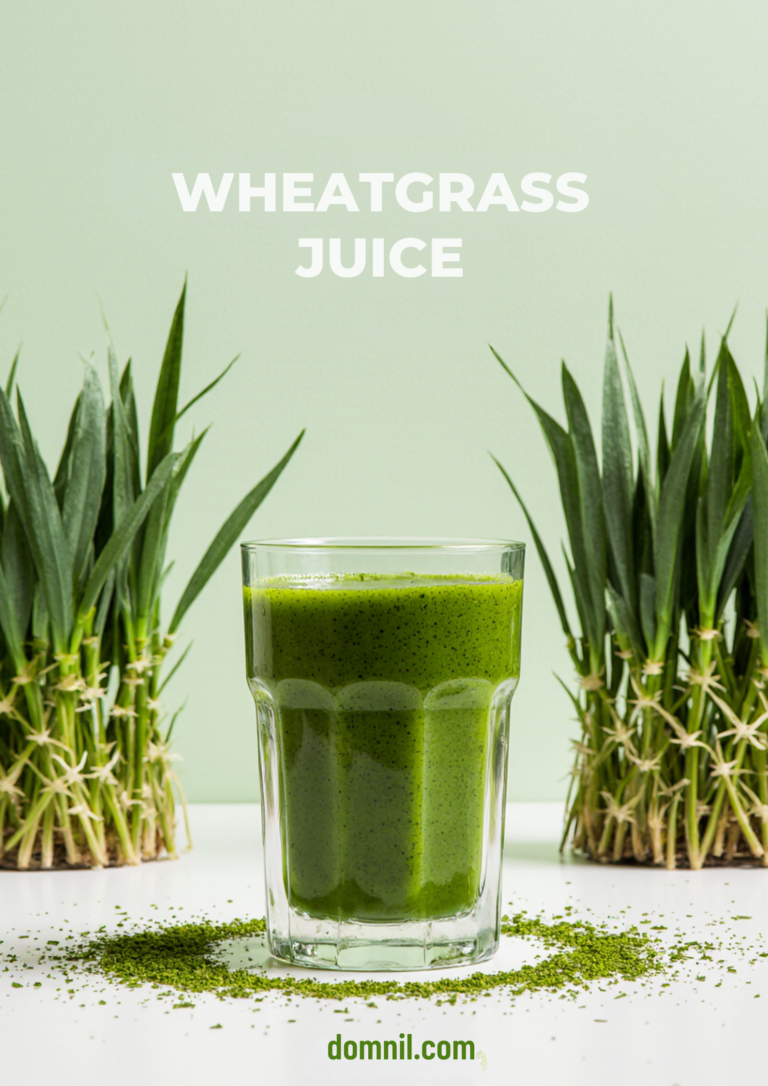How to Make Fresh Pomegranate Juice: The Ultimate Guide to Ruby Red Goodness
Did you know that one glass of fresh pomegranate juice contains more antioxidants than green tea, red wine, and blueberry juice combined? This amazing fact might surprise you, but it’s just one reason why making your own pomegranate juice at home is worth every minute of effort.
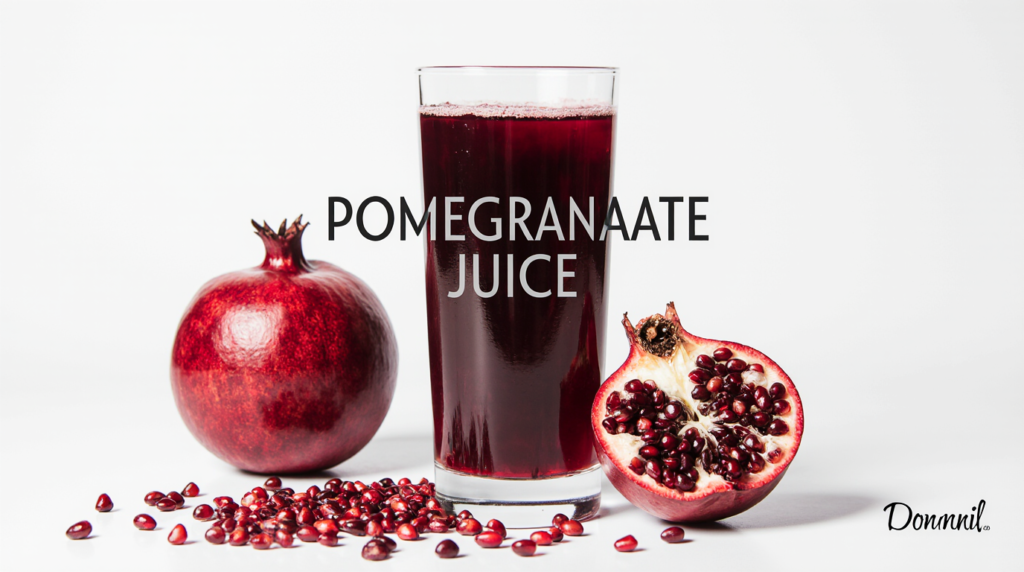
Overview: Why This Recipe is Special
Making fresh pomegranate juice might seem tricky, but it’s actually quite simple once you know the right tricks. This recipe is special because it shows you three different methods to extract juice, so you can choose what works best for your kitchen setup.
Time Requirement: 15-20 minutes total Difficulty Level: Easy to Medium (depends on method chosen) Special Features:
- No special equipment needed for basic method
- Multiple extraction techniques
- Zero preservatives or added sugars
- Maximum nutrition retention
What makes this recipe stand out is that we’ll teach you how to get the most juice from your pomegranates while keeping all the healthy stuff intact. Plus, you’ll learn storage tricks that keep your juice fresh for weeks.
Essential Ingredients
The beauty of pomegranate juice lies in its simplicity. Here’s what you need:
Primary Ingredients:
- 4-6 large, ripe pomegranates (yields about 2 cups of juice)
- Optional: 1-2 tablespoons honey or maple syrup (for sweetness)
- Optional: 1 tablespoon fresh lemon juice (for brightness and preservation)
Why These Ingredients Matter:
Pomegranates: Choose fruits that feel heavy for their size with unblemished, deep red skin. The weight indicates lots of juice inside. Avoid fruits with cracks or soft spots.
Sweetener (Optional): Some pomegranates can be tart. Natural sweeteners balance the flavor without masking the fruit’s natural taste.
Lemon Juice (Optional): Adds brightness and helps preserve the juice longer. The acid also helps maintain the beautiful red color.
Substitutions and Variations:
- For sweetness: Use agave nectar, stevia, or skip entirely
- For tartness: Add lime juice instead of lemon
- For flavor variety: Mix with apple juice or cranberry juice
- For frozen pomegranates: Use 3 cups of frozen arils (seeds)
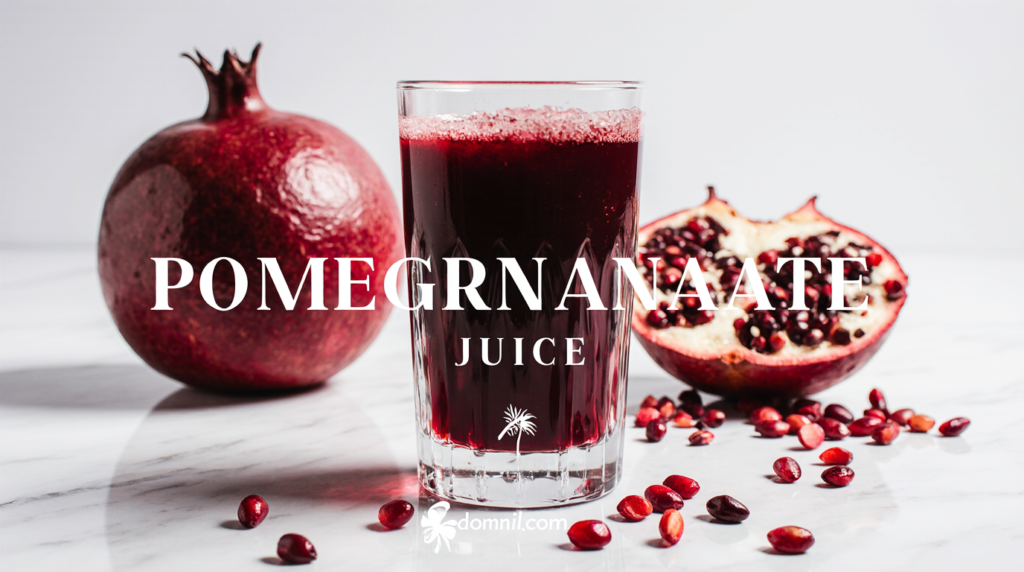
Step-by-Step Instructions
Method 1: Hand-Squeezing (Easiest)
Step 1: Roll each pomegranate on a hard surface while pressing firmly. This breaks the internal membranes and makes juicing easier.
Step 2: Cut the pomegranate in half crosswise (not lengthwise). You’ll see the seed chambers clearly.
Step 3: Hold one half cut-side down over a bowl. Squeeze firmly while tapping the back with a wooden spoon. The seeds will fall out.
Step 4: Repeat with all halves. Remove any white pith that falls out.
Step 5: Place seeds in a fine-mesh strainer over a bowl. Press with the back of a spoon to extract juice.
Method 2: Blender Method (Most Juice)
Step 1: Extract seeds using the method above, but don’t worry about getting every last one.
Step 2: Add seeds to a blender. Pulse 5-6 times to break the seeds. Don’t blend continuously or you’ll crush the bitter inner seed.
Step 3: Pour through a fine-mesh strainer, pressing the pulp to extract more juice.
Step 4: For ultra-smooth juice, strain again through cheesecloth.
Method 3: Juicer Method (Quickest)
Step 1: Extract seeds as described above.
Step 2: Run seeds through your juicer according to manufacturer instructions.
Step 3: Strain if desired for smoother texture.
Pro Tips for All Methods:
- Wear old clothes or an apron – pomegranate juice stains
- Work over the sink when possible
- Keep seeds cold – they juice better when chilled
- Save some whole seeds for garnish
Assembly and Presentation
Now that you have your fresh pomegranate juice, here’s how to serve it beautifully:
Basic Serving:
- Taste your juice and add sweetener if needed
- Add lemon juice if using
- Stir well and chill for at least 30 minutes
- Serve over ice in clear glasses to show off the beautiful color
Presentation Tips:
- Garnish with fresh pomegranate seeds – they look like little jewels
- Add a sprig of mint for color contrast and fresh aroma
- Rim glasses with sugar for a fancy touch
- Serve in mason jars for a rustic, homemade feel
- Add citrus wheels (orange or lime) for extra visual appeal
Serving Suggestions:
- Morning wellness shot (2 oz serving)
- Afternoon refresher over ice
- Mixed with sparkling water for a healthy soda
- As a base for smoothies or cocktails
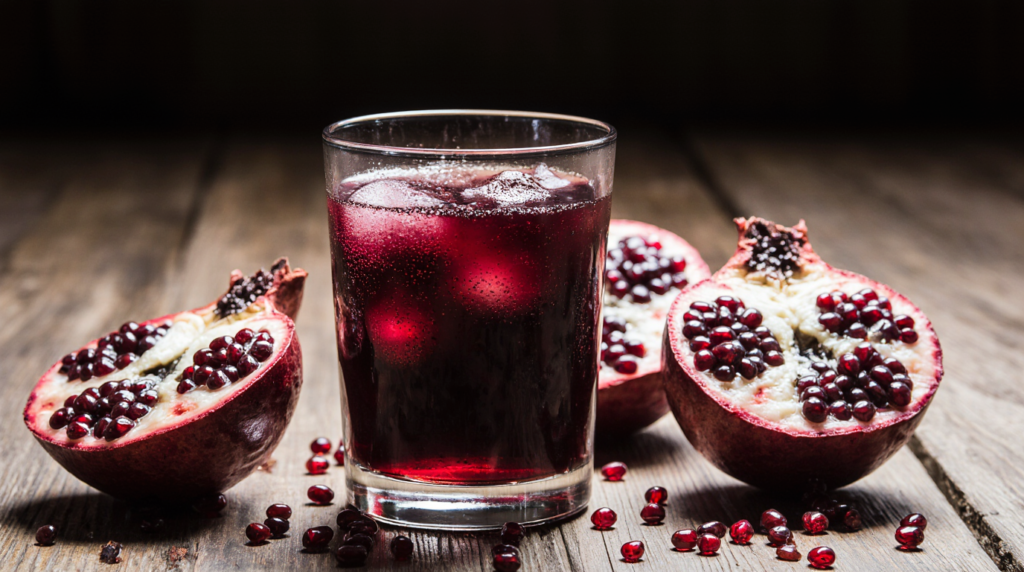
Storage and Make-Ahead Tips
Fresh pomegranate juice is best enjoyed immediately, but proper storage keeps it delicious for days or even weeks.
Short-Term Storage (3-5 days):
- Store in glass jars or bottles in the refrigerator
- Fill containers to the top to minimize air exposure
- Add a splash of lemon juice to maintain color and freshness
Long-Term Storage (2-3 weeks):
- Freeze in ice cube trays, then transfer cubes to freezer bags
- Store in small portions (1-2 cup containers) for easy thawing
- Leave room at the top of containers for expansion when frozen
Make-Ahead Tips:
- Extract seeds and store them covered in the fridge for up to 3 days
- Juice can be made up to a week ahead for parties
- Frozen juice cubes work great in smoothies
- Make large batches when pomegranates are in season (fall/winter)
Recipe Variations
The basic pomegranate juice recipe is just the beginning. Here are creative ways to mix things up:
Flavor Combinations:
- Pomegranate-Apple: Mix equal parts for a mellower flavor
- Pomegranate-Ginger: Add 1 inch fresh grated ginger for zing
- Pomegranate-Mint: Muddle fresh mint leaves before adding juice
- Pomegranate-Lime: Add lime juice and zest for tropical vibes
Healthy Boosts:
- Green Addition: Blend in a handful of spinach (you won’t taste it!)
- Protein Power: Add a scoop of vanilla protein powder
- Superfood Mix: Combine with acai or goji berry juice
- Probiotic Version: Mix with kefir or kombucha
Seasonal Variations:
- Fall Spice: Add cinnamon and nutmeg
- Winter Warmth: Heat gently with cloves and orange peel
- Spring Fresh: Mix with cucumber juice
- Summer Cool: Blend with watermelon juice
Health Benefits and Nutrition
Pomegranate juice isn’t just delicious – it’s incredibly good for you:
- Antioxidant Powerhouse: Contains punicalagins and anthocyanins
- Heart Health: May help lower blood pressure and cholesterol
- Anti-Inflammatory: Helps reduce inflammation throughout the body
- Brain Health: May improve memory and cognitive function
- Immune Support: High in vitamin C and other immune-boosting compounds

Conclusion
Making fresh pomegranate juice at home is easier than you might think, and the results are so much better than store-bought versions. You control the sweetness, avoid preservatives, and get maximum nutrition from this superfruit.
Don’t be afraid to experiment with different methods to find what works best for your kitchen. Try the hand-squeezing method first if you’re new to pomegranates, then graduate to the blender method when you want maximum juice yield.
The best part about homemade pomegranate juice is that you can customize it to your taste. Start with the basic recipe, then add your own creative touches. Your body will thank you for all those antioxidants, and your taste buds will love the fresh, vibrant flavor.
Frequently Asked Questions
Q: How do I choose the best pomegranates for juicing? A: Look for fruits that feel heavy for their size with deep red, unblemished skin. Avoid any with cracks, soft spots, or brown areas. The heavier the fruit, the more juice it contains.
Q: Can I juice pomegranates with the peel on? A: No, always remove the peel and white pith. The peel is bitter and can make your juice taste unpleasant. Only juice the red arils (seeds).
Q: How long does fresh pomegranate juice last? A: In the refrigerator, fresh juice lasts 3-5 days. For longer storage, freeze it in ice cube trays or small containers for up to 3 months.
Q: Is pomegranate juice good for weight loss? A: Pomegranate juice can be part of a healthy diet, but it does contain natural sugars. Drink it in moderation (4-6 oz per day) and consider diluting with water for fewer calories.
Q: Can I make pomegranate juice without a juicer? A: Absolutely! The hand-squeezing and blender methods work great without special equipment. You just need a strainer and some patience.
Q: Why is my pomegranate juice bitter? A: Bitterness usually comes from including white pith or crushing the inner seeds too much. Make sure to remove all white parts and pulse gently in the blender.
Q: Can I mix pomegranate juice with other fruits? A: Yes! Pomegranate juice pairs well with apple, grape, cranberry, and citrus juices. Start with small amounts to find your preferred flavor balance.
Q: Is it normal for pomegranate juice to separate? A: Yes, natural separation is normal. Just stir before drinking. If you want to prevent separation, strain the juice through a fine mesh or cheesecloth.

